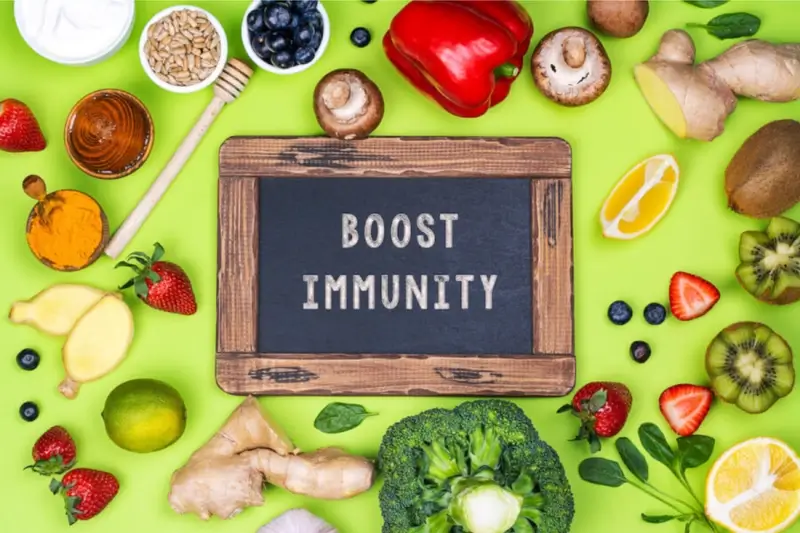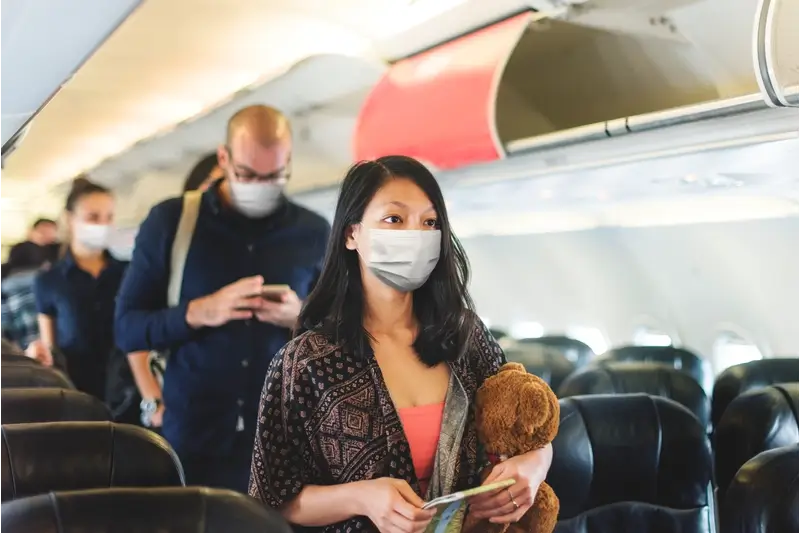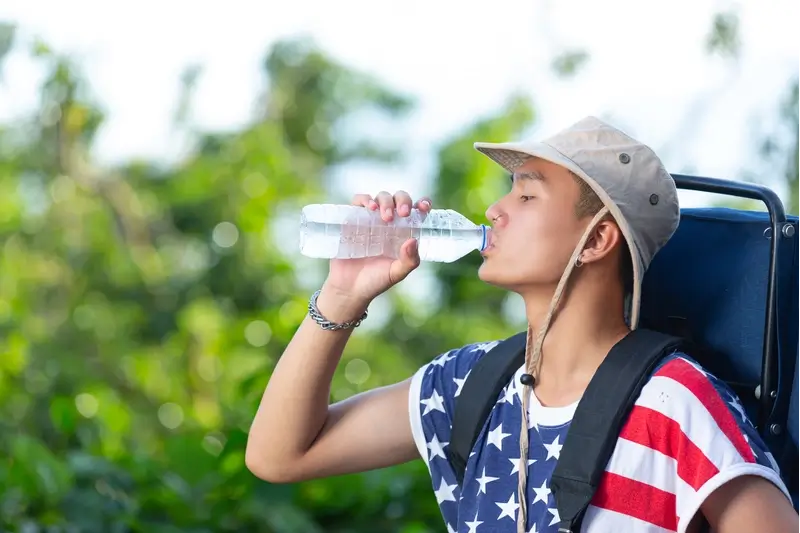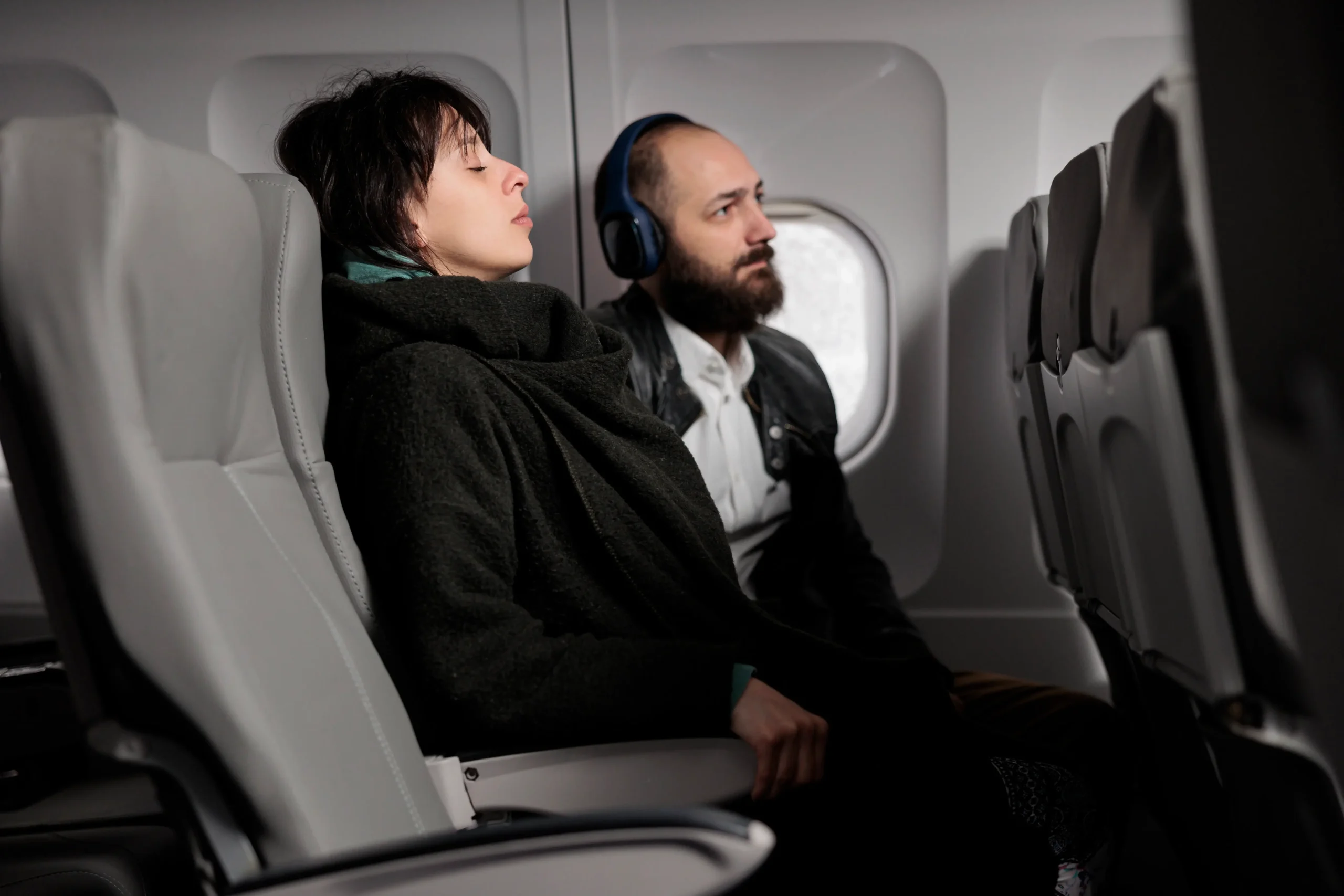Flying can be stressful, especially if you worry about getting sick. Airplanes are confined spaces where germs can spread easily.
Hey friends, grab a seat and let’s chat about how to avoid getting sick on a plane. I’ve clocked thousands of miles in the air, from quick hops to long-hauls across oceans. Nothing ruins a trip faster than landing with a sniffle or worse. Over time, I’ve picked up habits that keep me healthy, drawing from my own mishaps and what works for others.
I’ve had my share of post-flight colds. Once, after a red-eye from New York to London, I spent the first day in bed with a fever. That taught me to prep smarter. Now, I rarely get hit. Let’s dive into what I do before even stepping into the airport.
Getting My Body Ready Before the Flight
I always start boosting my immune system a week out. Good sleep is non-negotiable—I aim for eight hours nightly. It helps my body fight off whatever’s floating around. I load up on fruits like oranges and berries for natural vitamin C.
I take supplements too. A daily elderberry or zinc lozenge has saved me more than once. They’re easy to pack and don’t mess with my stomach. Hydration kicks in early; I drink extra water to counter the dry cabin air ahead.
Stress can tank your defenses, so I unwind with a walk or meditation. No last-minute packing frenzy for me. This routine keeps me strong against the germs waiting in those metal tubes.

Picking the Perfect Seat to Dodge Germs
Seat choice matters more than you think. I always go for a window spot. Fewer people brush by, cutting my exposure to coughs and sneezes. It’s quieter too, which helps me relax.
I avoid aisle seats like the plague. Flight attendants and passengers constantly pass, upping the risk. Middle seats? Forget it—they’re sandwiched between potential sickos.
For long flights, I pick the front of the plane. Fresh air circulates there first. Restroom proximity is a no-go; too much traffic means more bugs. Booking early locks in these options.
What I Pack to Stay Clean and Healthy
My carry-on is my fortress. Hand sanitizer with 60% alcohol tops the list. I use it after every touchpoint, like security bins or door handles. It kills most germs fast.
Sanitizing wipes are next. I wipe down everything once seated—tray table, armrests, even the seatbelt. Planes aren’t deep-cleaned between flights, so this is crucial.
I bring a refillable water bottle. Filling it post-security keeps me hydrated without relying on iffy plane water. Electrolyte packets mix in to replenish what the dry air steals.
Masks are always in my bag. A well-fitted N95 or KN95 blocks droplets better than cloth. I swap them if they get damp.
For snacks, I pack bland stuff like crackers. Greasy airport food can upset my stomach mid-air. A small first-aid kit rounds it out—pain relievers, antacids, and band-aids.
Navigating the Airport Without Picking Up Bugs
Airports are germ hubs, so I time my arrival carefully. I aim for off-peak hours, like mid-morning on weekdays. Fewer crowds mean less close contact.
I wear comfortable shoes I can wipe down later. Floors are filthy from thousands of feet. No bare feet or sandals for me.
Hand washing is constant. I hit the bathroom sinks before eating or touching my face. If lines are long, sanitizer bridges the gap.
I skip crowded gates. Finding a quiet spot to wait reduces exposure. Boarding last lets me avoid the line-up crush.
Boarding Smart to Minimize Risks
When it’s time to board, I hang back. Rushing in packs everyone tight in the jetway. Waiting means fresher air when I step on.
Once aboard, I wipe my area immediately. Headrest, entertainment screen, vents—all get a once-over. It takes two minutes but pays off.
I store my bag overhead. Under-seat space collects dirt from shoes. Keeping things up top keeps them clean.
If someone’s coughing nearby, I politely ask to switch seats if possible. Most crews accommodate for health reasons.
Keeping Clean During the Flight
In-flight hygiene is where I double down. I wash hands before meals, even if it means a quick trip to the lavatory. Soap and water beat sanitizer for some bugs.
I avoid touching my face entirely. Eyes, nose, mouth—those are entry points for viruses. It’s a habit now, but it works.
Masks stay on, especially during meal service. I lift it just to sip or eat, then back down. It cuts droplet risk big time.
I use the air vent full blast, aimed at my face. It creates a barrier, pushing germs away. Cabin air filters are good, but this adds extra protection.

Staying Hydrated and Nourished Up There
Dehydration hits hard at 30,000 feet. Cabin humidity is desert-low, drying out your nose and throat. I sip water steadily, aiming for a cup per hour.
Electrolytes help too. A packet in my bottle keeps balance. No alcohol or coffee—they worsen dryness.
For food, I eat light. My packed snacks prevent hunger without heavy meals. Ginger ale from the cart soothes any queasiness.
If motion sickness creeps in, I chew gum or take a non-drowsy pill beforehand. Relaxing with deep breaths keeps it at bay.

Dealing with Motion Sickness If It Hits
Motion sickness isn’t illness, but it feels awful. I choose seats over the wings for stability. The back bounces more.
I avoid reading or screens. Staring at the horizon through the window helps. Audiobooks are my go-to instead.
Deep breathing calms my nerves. Inhale slow, exhale slower. It reduces anxiety that amps up nausea.
If needed, I ask for ginger ale. The ginger settles stomachs naturally. No spicy or greasy pre-flight eats for me.
Using the Bathroom Wisely—or Not At All
Plane bathrooms are tiny petri dishes. I use the airport one right before boarding. That often lets me skip the onboard version.
If I must go, I sanitize the handle, seat, everything. Paper towels open the door on exit.
I limit liquids pre-board to avoid trips. But not too much—dehydration is worse.
Gloves or tissues for touching surfaces add a layer. Quick in, quick out minimizes time in there.
Boosting Immunity Mid-Air
Even in flight, I support my system. A vitamin C lozenge dissolves slowly. It keeps defenses up.
Nasal saline spray moistens passages. Dry air cracks them, letting germs in. A quick spritz every few hours helps.
I avoid sharing snacks or drinks. My stuff stays mine. No germ swap with seatmates.
If I feel off, I rest. Eyes closed, music on—sleep recharges me.
What Doctors Taught Me About Travel Health
I’ve chatted with doctor friends about this. They swear by masks in transit. One said she hasn’t gotten sick since switching to N95s.
Hand sanitizing is their mantra. After every shared touch, zap those germs. They pack extras for long trips.
Hydration and rest top their lists. Jet lag weakens you, so they build in recovery time.
They research vaccines too. For international, I check CDC for extras like hep A.
Lessons from Fellow Travelers on Forums
Reddit folks have great hacks. One user raves about 3M Aura masks—they fit tight, no leaks.
Probiotics daily prevent gut issues. Another swears by Airborne for vitamin boosts.
Walking hourly stretches legs and circulates blood. It fights clots and keeps energy up.
They avoid peak times too. Less rush, less risk.
Handling Long-Haul Flights Differently
Long-hauls need extra care. I layer clothes for temp changes. Chills weaken immunity.
I stand and stretch often. It boosts circulation, fighting fatigue.
Time zone shifts? I adjust sleep pre-flight. Melatonin helps reset my clock.
Post-landing, I walk outside. Fresh air revives me fast.
Post-Flight Routines to Shake Off Any Lingering Risks
Landing isn’t the end. I wash hands first thing in the airport. Then, hydrate more.
I unpack and wipe gear down. Shoes get sanitized outside.
Rest is key. I give myself a buffer day to recover. No rushing back to work.
If symptoms start, I monitor them. Tea and rest usually knock them out early.
Why Plane Air Isn’t as Bad as You Think
Cabin air refreshes often. HEPA filters catch 99% of particles. It’s cleaner than you imagine.
But recirculation means one sick person affects many. That’s why personal barriers matter.
Low humidity is the real villain. It dries defenses. Counter it with moisture tricks.
Vents help direct flow. Turn yours on low to medium for best effect.

Avoiding Common Mistakes That Get People Sick
Don’t forget meds in checked bags. Carry-ons only for essentials.
Skip ice in drinks—water sources vary. Stick to bottled.
No barefoot walks to the bathroom. Socks at best, but shoes are safer.
Avoid overeating. Full stomachs plus turbulence equals trouble.
Tailoring Tips for Kids or Vulnerable Folks
With kids, I pack extra wipes. They touch everything.
Masks for them if tolerated. Games distract from discomfort.
For immune-compromised, consult docs first. Extra precautions like full-face shields.
Elderly? Hydrate more, move often. Assistance if needed.
Eco-Friendly Ways to Stay Healthy
Reusable bottles cut plastic waste. Cloth masks if washable.
Biodegradable wipes exist. I seek them out.
Digital tickets reduce paper touches. Apps for everything.
My Go-To Products That Make a Difference
3M Aura masks—fold flat, fit great.
Travel-size Purell—60% alcohol, no scent.
Hydro Flask bottle—keeps water cold.
Emergen-C packets—easy mix-ins.
Clorox wipes—individually wrapped for convenience.
When to Seek Help If You Do Get Sick
Mild sniffles? Rest and fluids.
Fever over 100? See a doc.
Shortness of breath? Urgent care.
Travel insurance covers unexpected visits.
Integrating These Habits into Every Trip
It becomes second nature. Pack list includes health items first.
I review before each flight. Adjust for season—more vitamins in winter.
Share with travel buddies. Group health keeps trips fun.
Track what works. My journal notes post-trip health.
Frequently Asked Questions
How effective are masks on planes?
They block most droplets. Fit matters—N95s are best. I wear one every flight.
Can plane water make you sick?
Sometimes, from tanks. I stick to my bottle or sealed drinks.
What’s the dirtiest spot on a plane?
Tray tables. Food spills and no daily cleans. Always wipe them.
Do air vents spread germs?
No, they filter air. Use them to push bugs away.
How to handle a coughing neighbor?
Mask up, vent on. Politely ask to move if seats open.
Is motion sickness preventable?
Yes, with seat choice and ginger. I avoid screens too.
What supplements help most?
Vitamin C and zinc. Start early, continue through trip.
Wrapping It Up: Fly Healthy and Enjoy the Journey
There you have it, pals—my full playbook on how to avoid getting sick on a plane. These steps have turned my travels from risky to reliable. Next time you’re jetting off, try a few. You’ll feel the difference. Safe skies and great adventures ahead. Cheers to healthy trips!



